Have you ever wondered how water is transported up the stem of a plant against gravity? This transportation process is called transpiration. We can demonstrate transpiration with these easy transpiration experiments.
You might also like our plant respiration and photosynthesis investigations.
Transport in Plants – Transpiration
Transpiration occurs when water on the surface leaf cells evaporates and then diffuses out of the leaf. This draws water out of the xylem cells inside the leaf to replace the evaporated water. Xylem cells form a continuous tube from the leaf to roots which acts like a drinking straw giving a flow of water from root to leaf.
Transport in Plants – Capillary Action
Transpiration helps another process called capillary action to take place, which is how water moves through a plant.
Water molecules are attracted to the molecules of the inside of the stem. It is this attraction which helps force the water up from the ground and around the plant.
Transpiration Experiment
You can demonstrate capillary action and transpiration by placing a flower in a glass of coloured water. After a few hours the petals will turn the same colour as the water, this is because the coloured water is transported up the stem and into the petals.
Transpiration Definition
Transpiration is the movement of water through a plant and evaporation from leaves, stems and flowers.
Water moves through the xylem vessels of a plant in a continuous transpiration stream.
root – stem – leaf
Functions of Transpiration – transport in plants
Transport of mineral ions
Transport of water to all parts of the plant, including leaf cells where it is needed for photosynthesis.
Keeping leaves cool as water evaporates from the surface.
What factors affect transpiration?
There are three forces involved in this process of transporting water in plants.
Adhesion allows water to stick to the organic tissues of a plant.
Cohesion keeps the water molecules together.
Surface tension holding the water molecules together as they are transported through the plant.
Capillary Action Definition
Capillary action s the movement of a liquid through a narrow space as a result of cohesion, surface tension and adhesion.
For capillary action to work, the adhesion force between the water and plant tissues must be stronger than the cohesion between water molecules.
When a water molecule is more attracted to the plant, it is pulled towards the plant tissue, but as water molecules are highly attracted to each other the first molecule brings further water molecules with it.
Plants use two different transport systems, both of which are rows of cells which form tubes around the plant.. The xylem transports water and minerals from the roots to the leaves while the phloem moves food substances from leaves to the rest of the plant.
Plant Stem Model
We used straws to make a very simplified model of a plant stem. The xylem is the centre yellow part and phloem the blue straws.
Easy capillary action experiment
This simple experiment is a super easy and fun demonstration of capillary action and water transport in plants.
Materials
Tray
Water
Paper – sugar paper works best
Scissors
Method
Cut out several flower shapes from the sugar paper.
Curl up the edges and place on the surface of the water.
Watch as the flower opens up.
How does capillary action work?
Paper is made of lots of fibres, as they absorb the water they swell and the paper expands, which made the flower shapes open up.
This process is called ‘capillary action’, the water uses this process to move along the tiny gaps in the fibres of the paper. It occurs due to the adhesive force between the water and the paper being stronger than the cohesive forces inside the water itself. This is the same process by which water travels from the root up the stem and to the petals of a plant.
More transpiration experiment ideas
The DK Website has some great plant facts for kids.
We also used two syringes to show water travelling up the stem of a LEGO plant, which is quite a nice model for younger children.
Suitable for Key Stage 2 Science
Plant Science
Investigate the way in which water is transported within plants
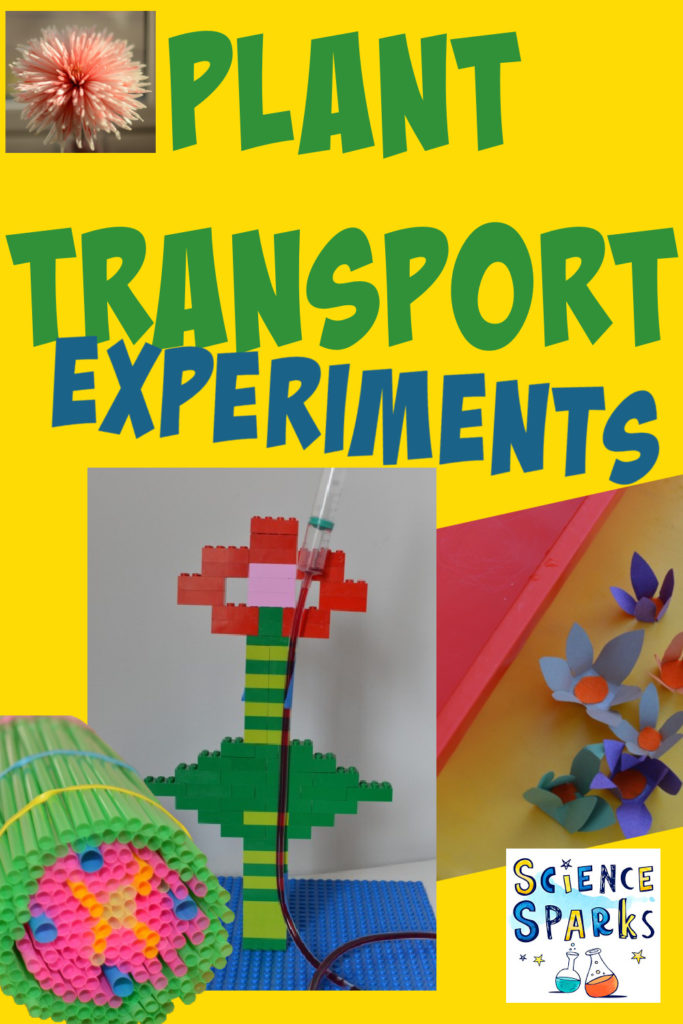
Last Updated on July 16, 2022 by Emma Vanstone

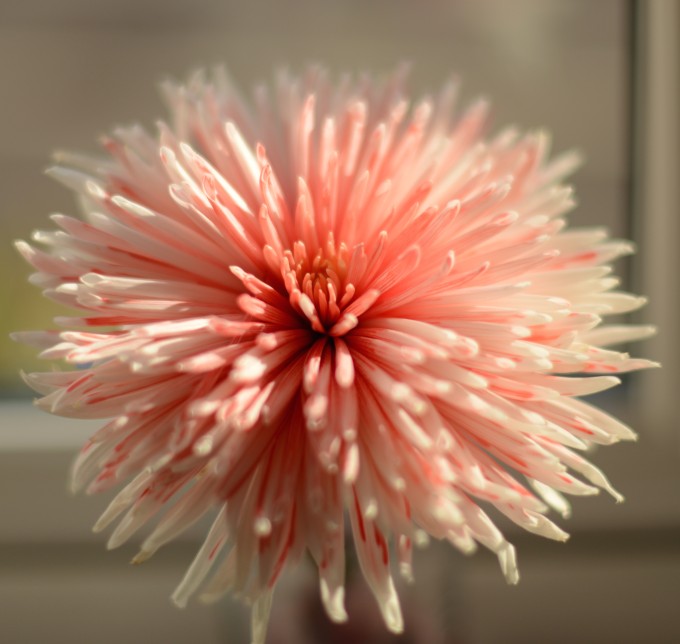
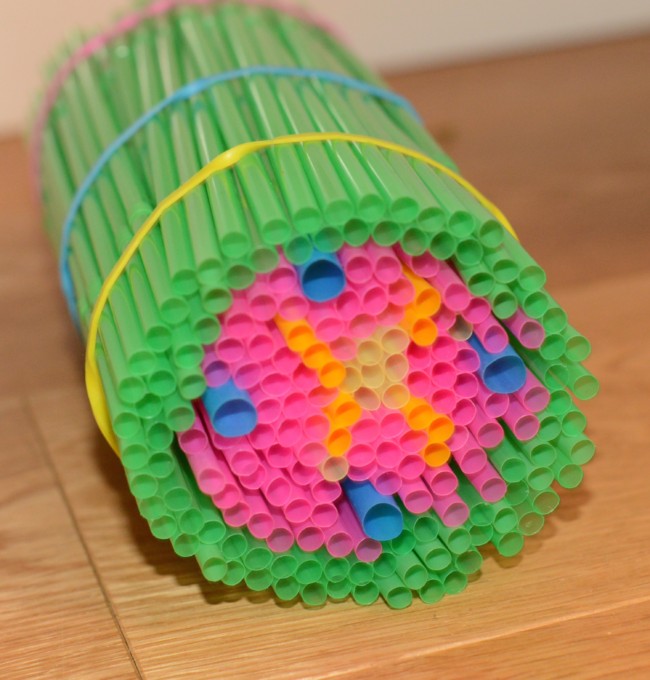
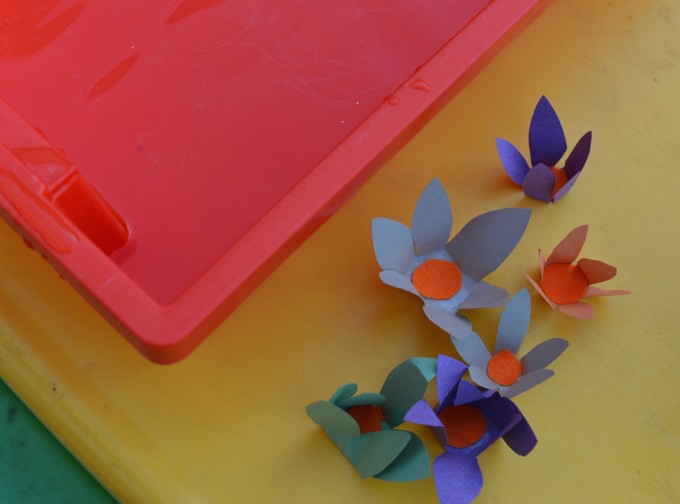
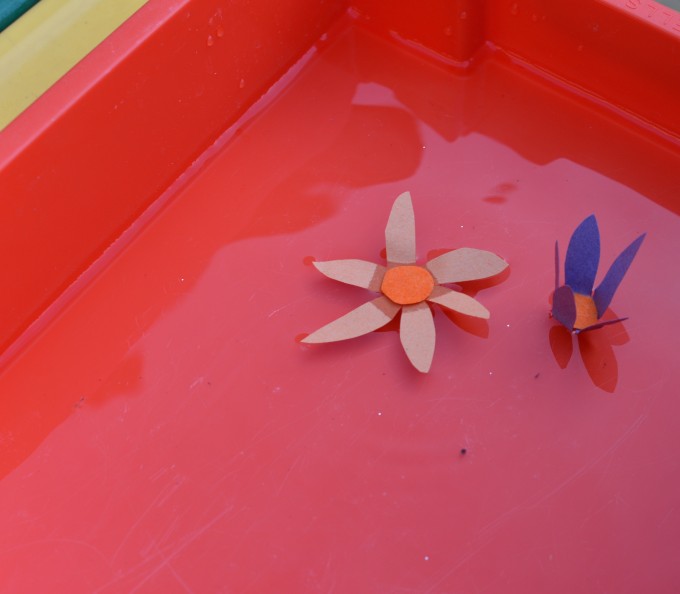
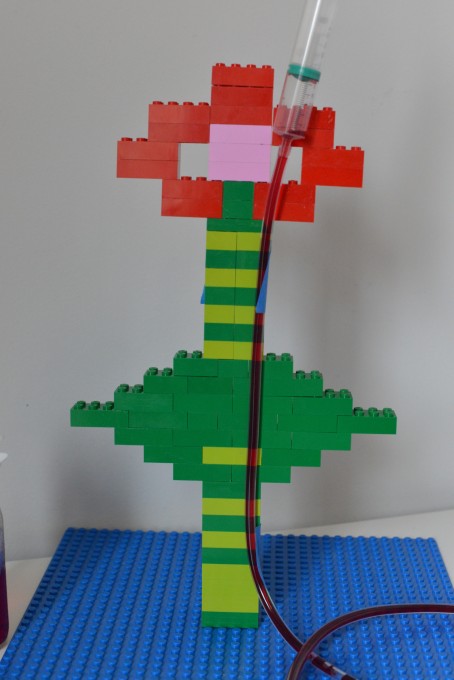
I love the addition of using paper flower shapes to show capillary action- much more exciting than the traditional paper towel in a cup! Great idea with the LEGO model too. Thanks for sharing!
I can’t wait to do this with my preschool class in the Spring!